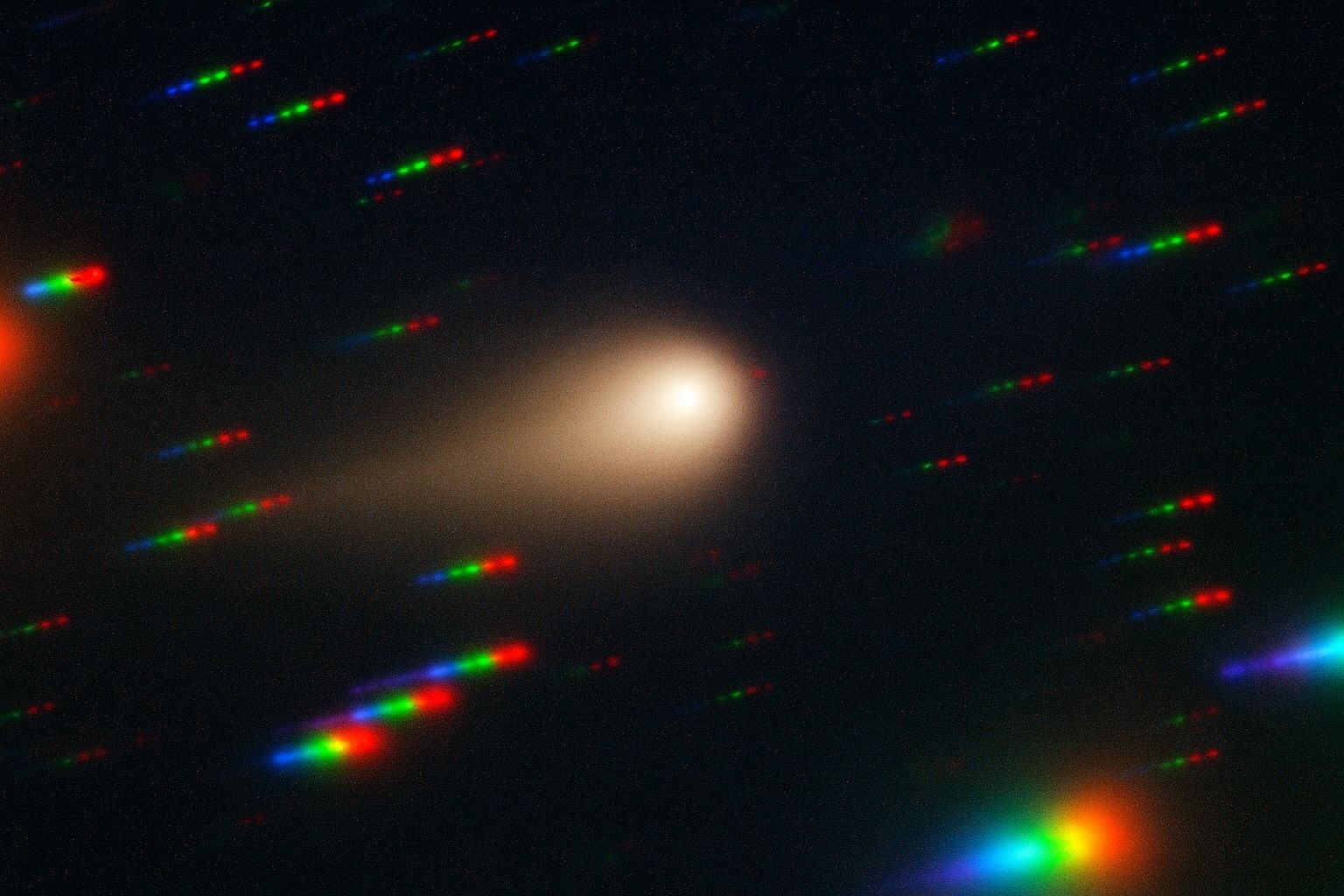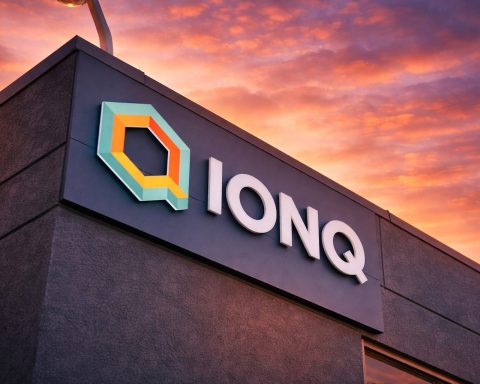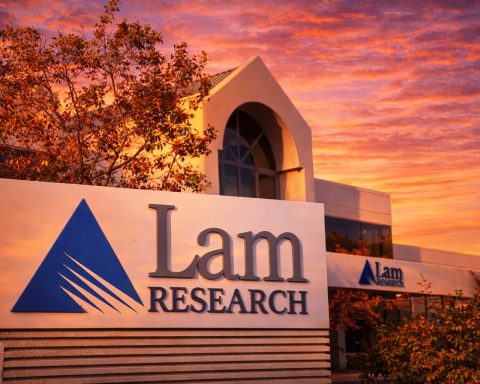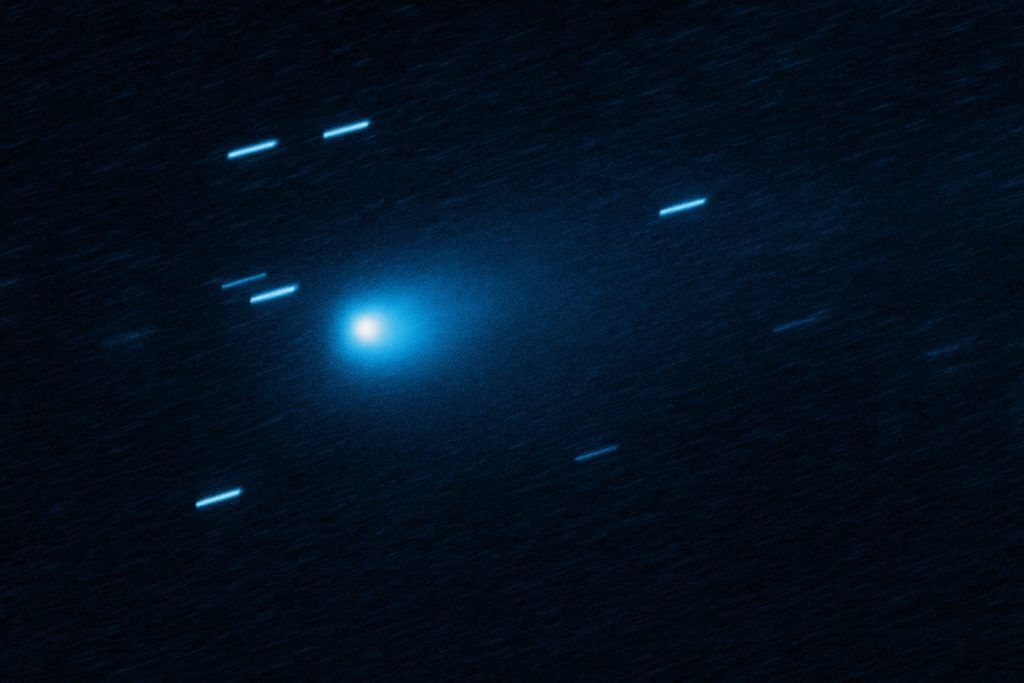- Third interstellar visitor: Comet 3I/ATLAS (C/2025 N1) is only the third known object from beyond our Solar System (after 2017’s ʻOumuamua and 2019’s Borisov). It was detected July 1, 2025 by the ATLAS survey in Chile, racing in on a hyperbolic trajectory at ~58 km/s (130,000 mph) – clear proof of an extrasolar origin [1]. At an estimated 5–11 km across, it may be the largest interstellar object ever observed [2].
- Sun approach, no threat: 3I/ATLAS will reach perihelion (closest point to the Sun) on October 29, 2025 at ~1.4 AU (inside Mars’ orbit) [3]. It will not hit the Sun or any planet, and won’t come nearer than ~1.8 AU (~270 million km) from Earth [4]. NASA and ESA confirm this comet poses no danger – its path keeps it far from Earth [5] [6]. In fact, its benign flyby is being used as a planetary defense drill: astronomers worldwide are tracking 3I/ATLAS as a test case to practice precise orbit predictions for future hazardous asteroids [7] [8].
- Bizarre sunward jet: Unlike the inert ‘Oumuamua, comet 3I/ATLAS is highly active. Telescopes observed a strange “anti-tail” – a narrow jet of dust and gas blasting toward the Sun [9], opposite a normal tail. This rare sunward jet was seen in August, then by September it “flipped” into a normal tail pointing away from the Sun [10] as the viewing angle changed. Now, approaching perihelion, 3I/ATLAS sports an ever-growing standard comet tail. Astronomers note such anti-tails are an optical illusion from our perspective – comet jets can temporarily point sunward while light dust is blown back, a “standard part of a comet’s anatomy,” explains Dr. Miquel Serra-Ricart [11] [12].
- Strange chemistry: Scientific instruments reveal unusual composition in this interstellar wanderer. NASA’s James Webb telescope found 3I/ATLAS is extremely rich in carbon dioxide but relatively low in water vapor – about an 8:1 CO₂-to-H₂O ratio, one of the highest ever seen in a comet [13]. Even more puzzling, spectra detected nickel gas venting from the comet’s coma with almost no iron – an elemental quirk never observed in normal comets [14]. Researchers suspect exotic metal-carbon compounds (like volatile nickel tetracarbonyl) could be sublimating and releasing Ni vapor [15]. 3I/ATLAS has been surprisingly active even while far from the Sun: one study spotted it shedding water “like a fire hose” (~40 kg per second) when it was still 2.9 AU out – three times farther than Earth, where sunlight is far too weak to usually vaporize ice [16]. Such early outgassing suggests 3I/ATLAS carries abundant super-volatile ices and “rewrites what we thought we knew” about comet activity in deep space [17] [18].
- Ancient time capsule: Based on its galactic orbit, scientists suspect 3I/ATLAS hails from the distant fringes of the Milky Way (perhaps the thick disk or another star’s Oort cloud) and could be older than our Sun. One analysis estimates it is ~3 billion years more ancient than our 4.6 billion-year-old Solar System [19] – on the order of 7–10 billion years old. This makes 3I/ATLAS a pristine cosmic time capsule preserving primordial material from its home star system [20]. As Dr. Dennis Bodewits of Auburn University put it, finding familiar molecules like water in 3I/ATLAS is “like reading a note from another planetary system… telling us the ingredients for life’s chemistry are not unique to our own” [21] [22].
- “Alien spaceship” rumors: The comet’s bizarre features (like its sunward jet and industrial-like nickel chemistry) have fueled wild speculation in some quarters. Famed Harvard astronomer Avi Loeb even mused that 3I/ATLAS might not be natural at all – suggesting the sunward jet could be a “braking thrust” from an alien-designed craft slowing down near the Sun [23]. He noted the comet’s path came from roughly the same patch of sky as the mysterious 1977 “Wow!” radio signal (once suspected to be of alien origin), hinting at a possible connection [24]. However, mainstream scientists strongly reject the spaceship idea. “It looks like a comet and it behaves like a comet. There’s no reason to think it’s something else,” emphasizes Dr. Michael Küppers, an ESA comet expert [25]. No artificial signals, unusual maneuvers or structures have been detected – all observations so far point to typical cometary activity driven by solar heating [26]. In Loeb’s own words, “by far the most likely outcome will be that 3I/ATLAS is a completely natural interstellar object” [27] [28].
- Unprecedented sky-watching campaign: 3I/ATLAS’s visit has sparked a worldwide scientific campaign to observe this interstellar interloper from every angle. NASA’s Hubble and JWST have been imaging and spectrally scanning the comet for months [29], while ground-based observatories (Gemini South, Keck, VLT and others) continuously monitor its evolution. Even off-planet cameras joined in: on Oct 3, as 3I/ATLAS swung ~30 million km from Mars, ESA’s Mars Express and ExoMars TGO spacecraft snapped photos – the first time ever that probes around another planet photographed an interstellar object [30]. The comet was extremely dim (up to 100,000 times fainter than typical targets), appearing only as a fuzzy dot in the Mars images [31] [32]. Still, it marked a historic first that scientists are now analyzing for clues about the comet’s brightness and makeup. Looking ahead, 3I/ATLAS is currently rounding the far side of the Sun and will be out of view around its October 29 perihelion. It’s expected to re-emerge into Earth’s night skies by mid-November, offering astronomers a rare chance to see how this alien comet changes after its solar close-up [33].
- Once-in-a-lifetime opportunity: Researchers around the globe are racing to glean as much data as possible before 3I/ATLAS disappears back into interstellar darkness. Several spacecraft on unrelated missions will even encounter the comet’s tail soon by coincidence: ESA’s JUICE Jupiter probe is set to observe 3I/ATLAS in November, and calculations show NASA’s Europa Clipper and ESA’s Hera spacecraft will actually fly through the fringes of the comet’s extensive tail in the coming weeks [34]. Meanwhile, the International Asteroid Warning Network has invited professionals and amateurs alike to observe 3I/ATLAS, both for science and to practice planetary defense techniques on a harmless target [35] [36]. “This could be literally a once-in-a-lifetime opportunity” to study an interstellar visitor up close, one astronomer noted [37] – a dry run for the day when a truly threatening object might appear. As 3I/ATLAS hurtles back toward the stars, it leaves us a trove of images, spectra and insights. Humanity may never see this same comet again, but the lessons it’s teaching us about other worlds will endure long after it’s gone [38] [39].
Sources: [40] [41] [42] [43] [44] [45] [46] [47] [48] [49]
References
1. ts2.tech, 2. www.livescience.com, 3. ts2.tech, 4. ts2.tech, 5. ts2.tech, 6. ts2.tech, 7. www.space.com, 8. www.space.com, 9. ts2.tech, 10. ts2.tech, 11. www.livescience.com, 12. www.livescience.com, 13. ts2.tech, 14. ts2.tech, 15. www.theguardian.com, 16. www.livescience.com, 17. www.livescience.com, 18. www.livescience.com, 19. www.livescience.com, 20. ts2.tech, 21. www.livescience.com, 22. www.livescience.com, 23. www.ndtv.com, 24. www.theguardian.com, 25. www.theguardian.com, 26. ts2.tech, 27. www.theguardian.com, 28. www.theguardian.com, 29. ts2.tech, 30. ts2.tech, 31. ts2.tech, 32. ts2.tech, 33. www.livescience.com, 34. ts2.tech, 35. www.space.com, 36. www.space.com, 37. www.space.com, 38. ts2.tech, 39. www.livescience.com, 40. ts2.tech, 41. ts2.tech, 42. www.livescience.com, 43. ts2.tech, 44. www.theguardian.com, 45. www.livescience.com, 46. www.theguardian.com, 47. ts2.tech, 48. ts2.tech, 49. www.space.com










